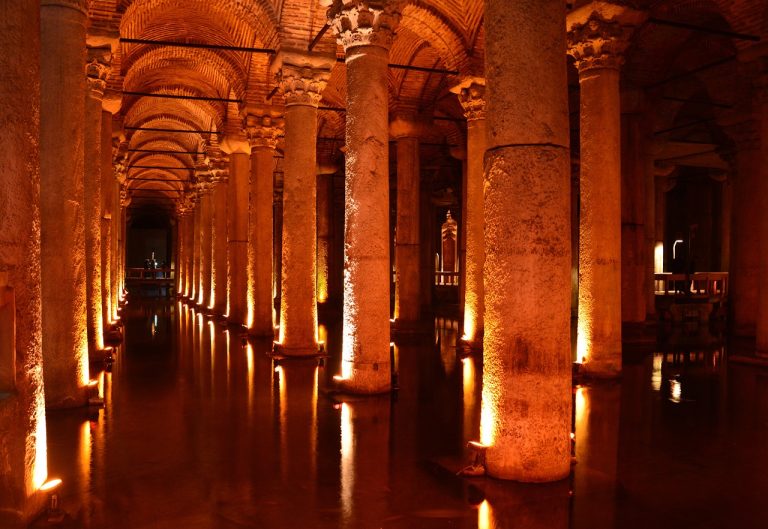
The Basilica Cistern was built to provide water to the Byzantine Imperial Palace and surrounding area.
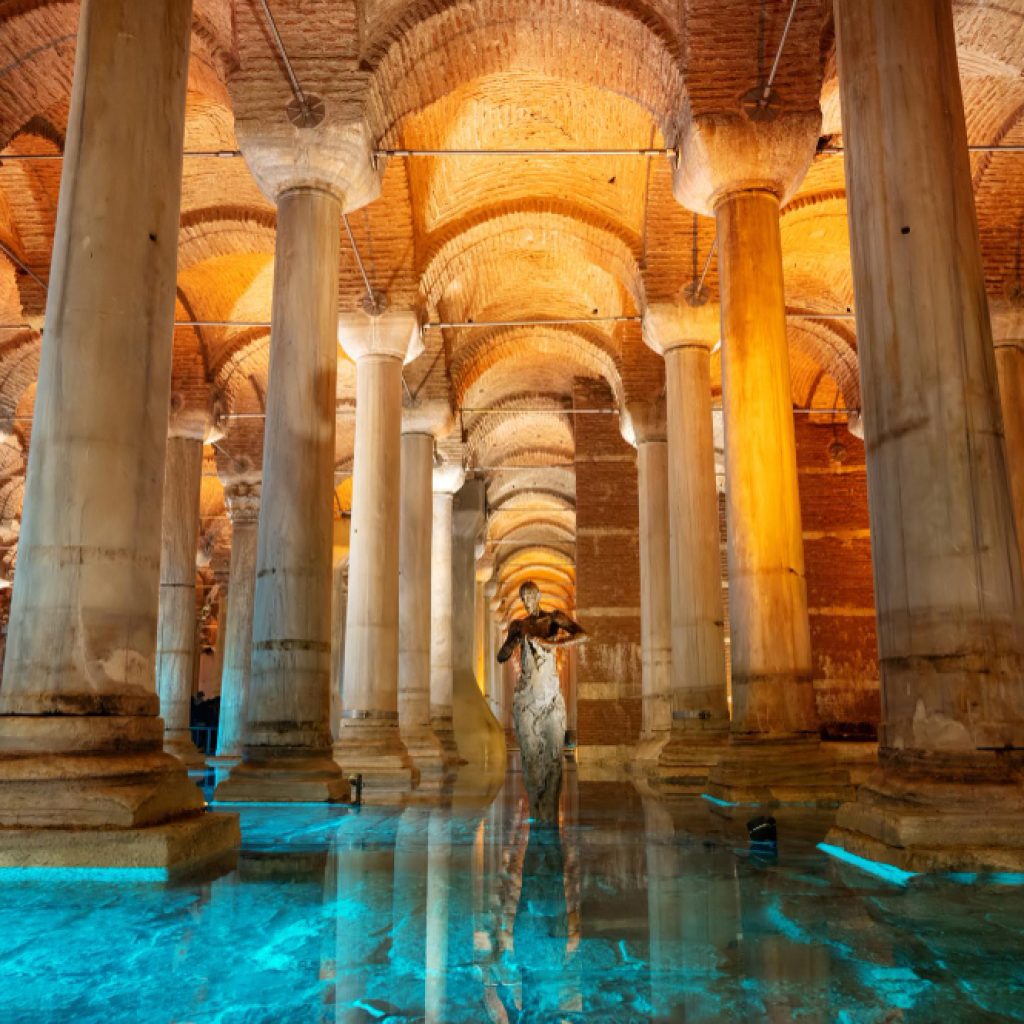
It served as the water reserve for the Ottoman Empire, supplying water to Topkapi Palace.
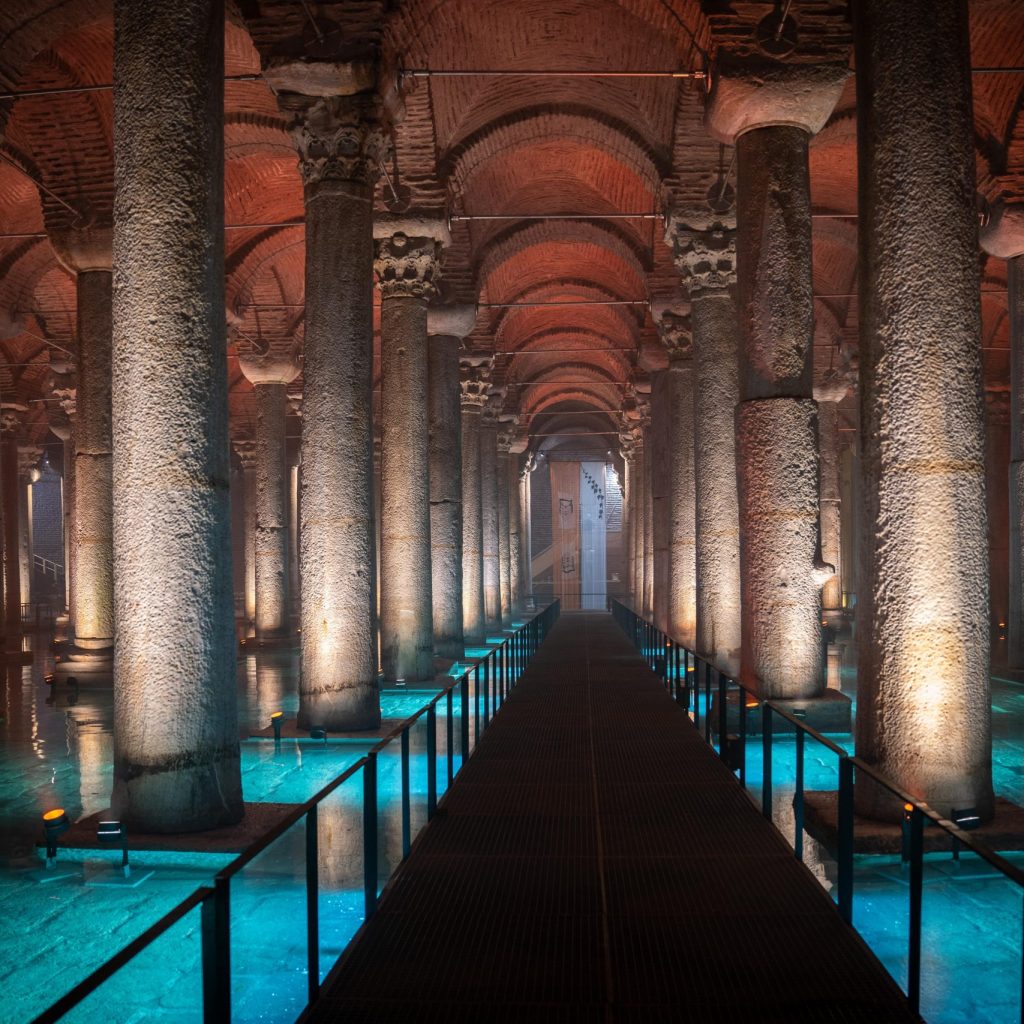
The Ottomans restored and illuminated the cistern, making it accessible to the public.
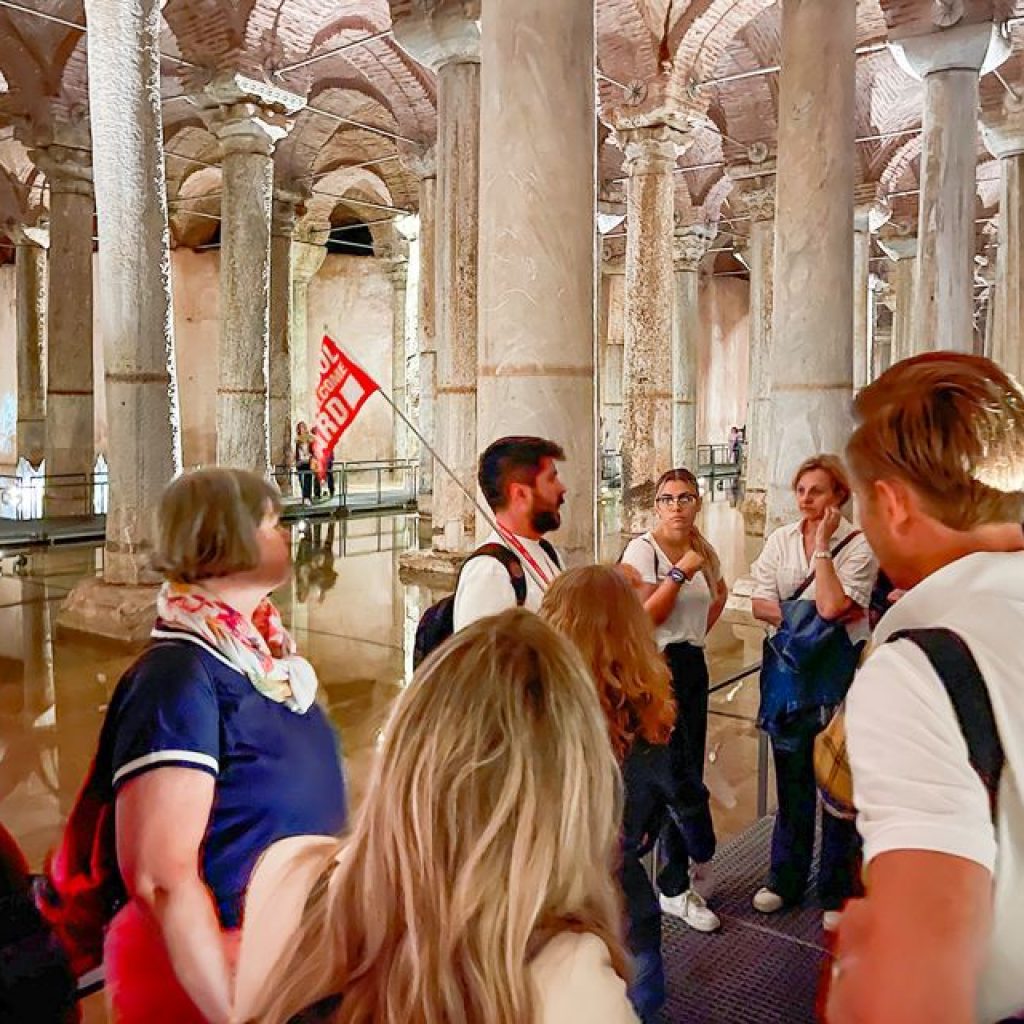
Following further restoration, the city government reopened the cistern as a museum, hosting numerous national and international events since.
Emperor Justinian I commissioned the cistern, utilising 336 marble columns with Roman and Greek artistic influences to support its vast structure. It served as a critical water source for the Great Palace and nearby buildings.
The cistern played a vital role during droughts and sieges, providing water to key locations like Topkapi Palace. It underwent significant restorations under Sultan Ahmed III and later under Sultan Abdulhamid II.
Between 1955 and 1960, structural reinforcements were added. A major restoration by the Istanbul Metropolitan Municipality from 1985 to 1987 included the installation of public walkways and the exposure of the Medusa head sculptures. This work transformed the cistern into a museum that regularly hosts various cultural events.
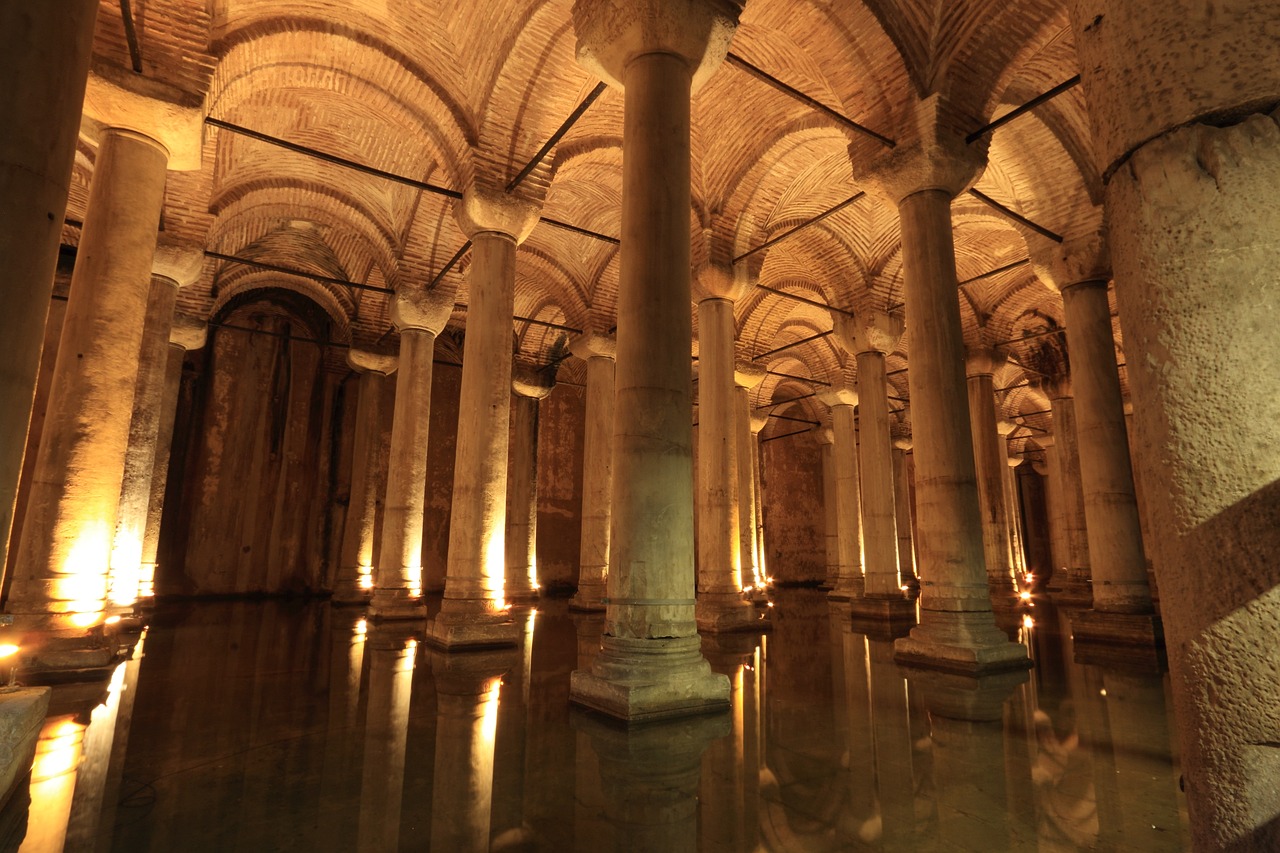
Covering 10,000 square metres, the cistern is rectangular, measuring 140 metres by 70 metres. Its design cleverly distributes water from nearby sources to the surrounding palace complex.
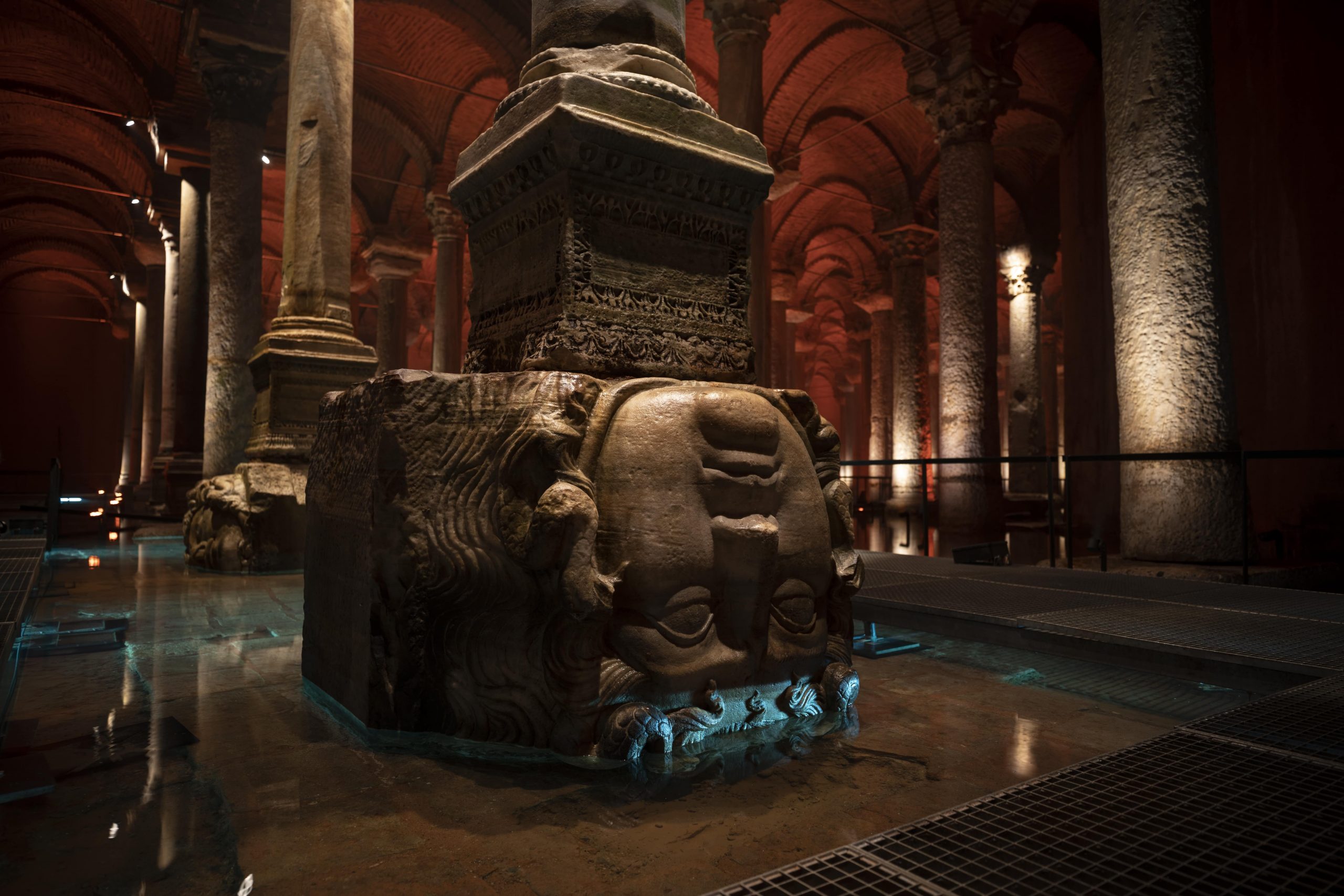
The cistern’s interior showcases an array of columns, ranging from ornate Corinthian to simpler styles, all strategically placed to ensure stability and aesthetic harmony. The robust construction includes brick walls and floors sealed with Horasan lime mortar for waterproofing.
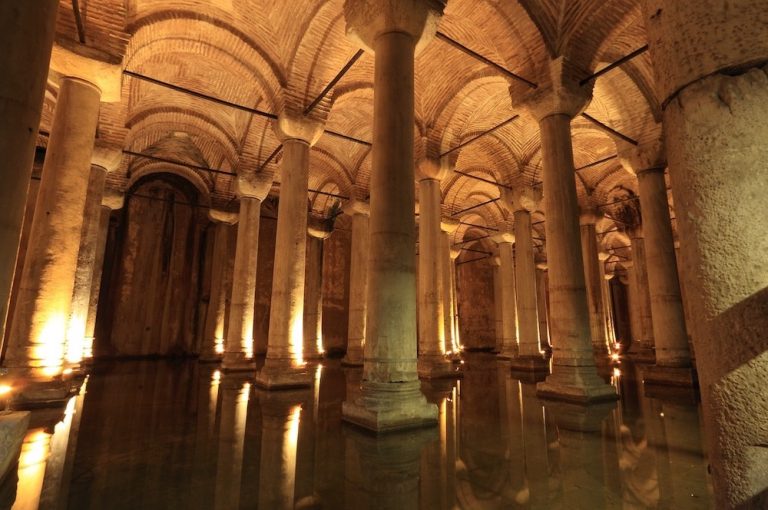
The Basilica Cistern was rediscovered between 1544 and 1555 by French naturalist Petrus Gyllius, who noted that locals were still utilizing the cistern for water access. His accounts provide valuable insights into the cistern's historical usage and structural integrity during this period.
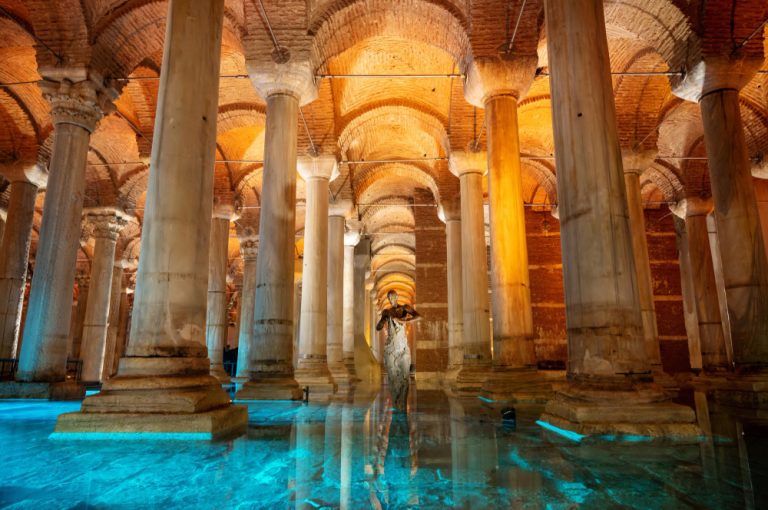
Following extensive restorations, the Yerebatan Cistern Museum reopened in July 2022. It now serves as a vibrant cultural hub, hosting exhibitions, performances, and events, under the auspices of the Istanbul Metropolitan Municipality's Culture Inc. This modern use blends the cistern’s historical significance with contemporary artistic expression.
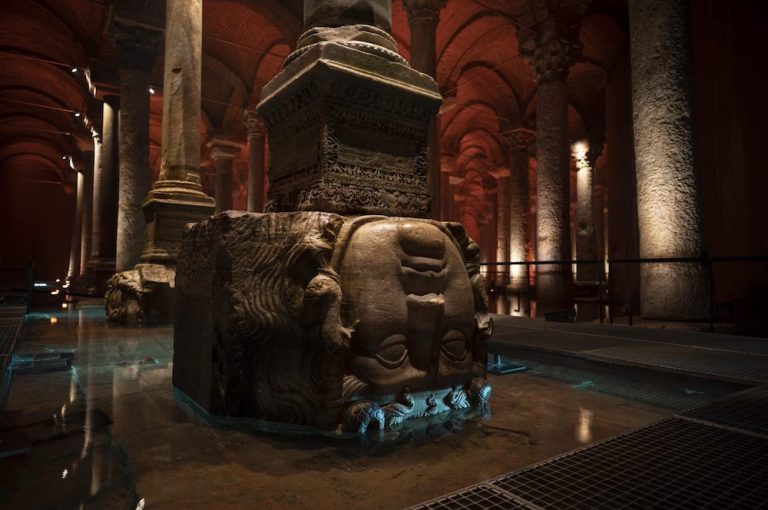
The legend of Medusa’s Tomb within the Basilica Cistern adds a layer of mystique to its historical narrative. Despite various explorations and legends surrounding a sarcophagus found in its catacombs, the true story remains shrouded in mystery, with historical records and myths intertwining to create a captivating urban legend.
Constructed in 532 AD by order of Emperor Justinian, the Basilica Cistern was originally intended to provide water to the Imperial Palace and nearby structures.
The construction of the Basilica Cistern, commissioned in the 6th century by Emperor Justinian I, spanned approximately 38 years, with around 7,000 slaves involved in the project.
Designed by the architect Tralles, the Basilica Cistern’s construction was carried out by over 7,000 slaves, with many losing their lives over the 38-year construction period.
Originating in the 6th century AD, the Basilica Cistern was crucial for supplying water to the Byzantine Imperial Palace and its environs and continued to serve under Ottoman rule to provide water to Topkapi Palace and the Imperial Harem.
The Basilica Cistern is celebrated for being a vital Byzantine water reserve. Its atmospheric arches and columns, highlighted by dramatic lighting, create a captivating ambiance. Notably, it houses the famous Medusa head sculptures at the base of two columns.
Reflecting Byzantine architectural principles, the Basilica Cistern features brick walls and vaulted ceilings supported by 336 marble columns, many of which are adorned with carvings from previous civilizations.
Entry to the Basilica Cistern is priced at approximately €23.90, which includes skip-the-line access and an audio guide.
Guided tours of the Basilica Cistern are available, providing a thorough exploration of its history. These tours are conducted by English-speaking guides who offer detailed insights into the site’s Byzantine and Ottoman architectural features.
Visiting the Basilica Cistern is highly recommended for history enthusiasts. Built in the 6th century to serve the Byzantine Palace, today it stands as a monumental example of ancient engineering, boasting an array of columns and arches.
